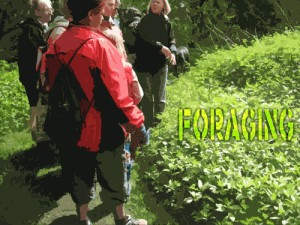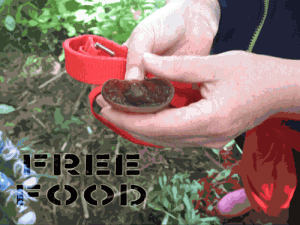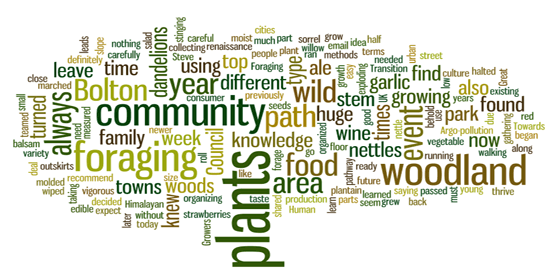There is almost always some type of plant growing wild with our towns and cities that is useful for us to use. We (Bolton Urban Growers) decided a while back that a Sunday urban forage was needed to explore the existing plants that we knew about that grew within our community, whilst attempting to learn about newer plants that we knew nothing of. We teamed up with Transition Towns Bolton and molded the idea of a community event where we learned from each other and shared our respective knowledge of plants. In terms of organizing this event it was very easy, a chat by email, and transition towns advertised it on their website, and that was it, event organized and ready to roll.
On our Street
We live on a Council estate in a fairly built up area so wouldn’t really expect to find edible plants so close by but we did, at the top of our street on the outskirts of the park we found Ground Elder, which can be eaten or brewed as an ale or wine, and some young stinging nettles which will be turned in nettle ale later this week, and dandelions, which will also be turned into wine. There is also some red willow, and wild strawberries in the park which I have cropped at different times of the year.
If you go down to the woods today
 Close to the boundaries of Great Lever in Bolton there is a Council owned woodland that leads down to a river. Along the top of the woodland was a huge variety of plants that ran along the pathway. After only a matter of minutes of walking on the path we had found nettles, plantain, dandelions and sorrel, which people carefully began collecting in small amounts so as to leave some to continue to grow and thrive. Towards the end of the path we cut into the woodland area and low and behold there was an area of wild garlic that must have measured around half an acre in size, it was like a huge blanket that covered the slope of the woodland floor. Such was the spread of the garlic in part of the woods that it seem to have halted the growth of the vigorous Himalayan balsam that had marched down the fill from the path in less than two years due the way its seeds are thrown from it exploding pods. I ate some Balsam stem and can wholeheartedly recommend using in salad, at this time of the year the stem is tender, quite moist with a subtle taste, I will definitely be using in salads from now on as a celery type vegetable.
Close to the boundaries of Great Lever in Bolton there is a Council owned woodland that leads down to a river. Along the top of the woodland was a huge variety of plants that ran along the pathway. After only a matter of minutes of walking on the path we had found nettles, plantain, dandelions and sorrel, which people carefully began collecting in small amounts so as to leave some to continue to grow and thrive. Towards the end of the path we cut into the woodland area and low and behold there was an area of wild garlic that must have measured around half an acre in size, it was like a huge blanket that covered the slope of the woodland floor. Such was the spread of the garlic in part of the woods that it seem to have halted the growth of the vigorous Himalayan balsam that had marched down the fill from the path in less than two years due the way its seeds are thrown from it exploding pods. I ate some Balsam stem and can wholeheartedly recommend using in salad, at this time of the year the stem is tender, quite moist with a subtle taste, I will definitely be using in salads from now on as a celery type vegetable.
Foraging for food and medicine in the future
 Human being have always foraged for food, but in recent times our consumer culture has wiped out much of knowledge of what was previously known and passed down from family to family and community to community, if you add this to concerns about industrial food production methods and Argo-pollution you have a foraging renaissance that is rapidly gathering momentum with every passing week. There are now foraging courses running up and down the UK which are held regularly throughout different parts of the growing year. it goes without saying that we need to be careful when foraging that we don’t wipe out that which we are taking, we should always leave a good deal of what we find when foraging so that these plants have time to recover.
Human being have always foraged for food, but in recent times our consumer culture has wiped out much of knowledge of what was previously known and passed down from family to family and community to community, if you add this to concerns about industrial food production methods and Argo-pollution you have a foraging renaissance that is rapidly gathering momentum with every passing week. There are now foraging courses running up and down the UK which are held regularly throughout different parts of the growing year. it goes without saying that we need to be careful when foraging that we don’t wipe out that which we are taking, we should always leave a good deal of what we find when foraging so that these plants have time to recover.
Steve

